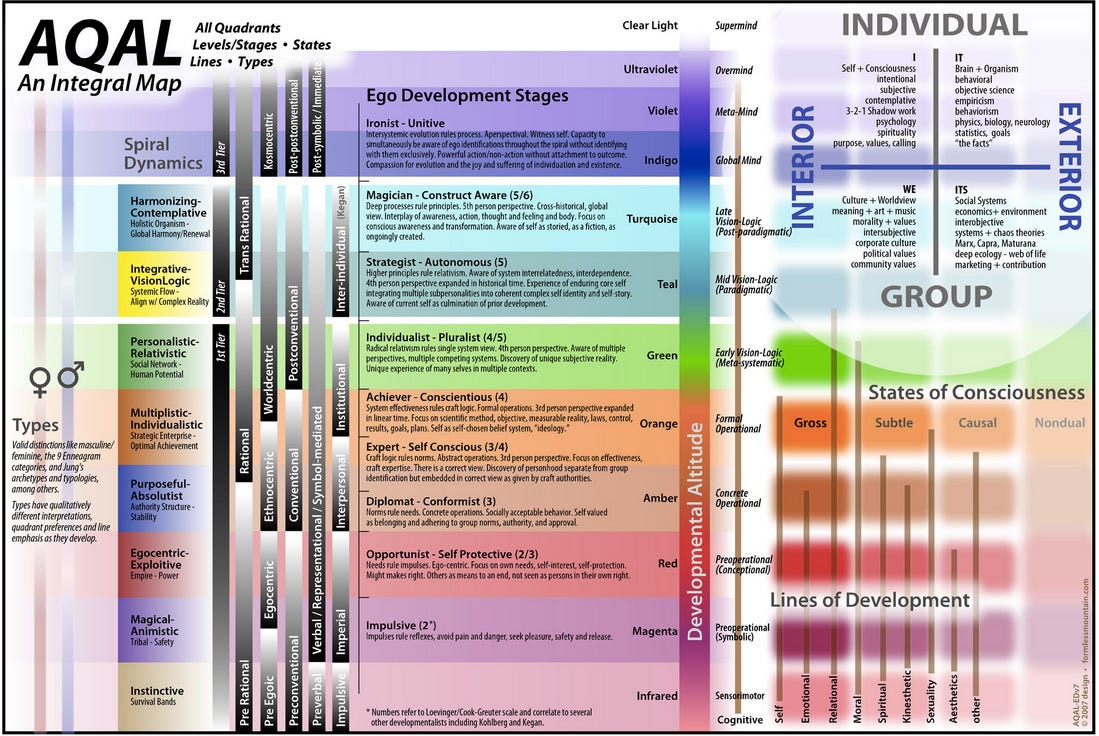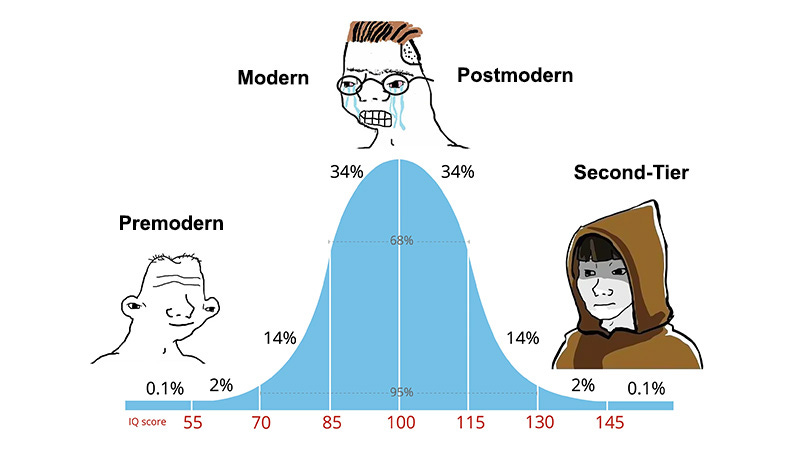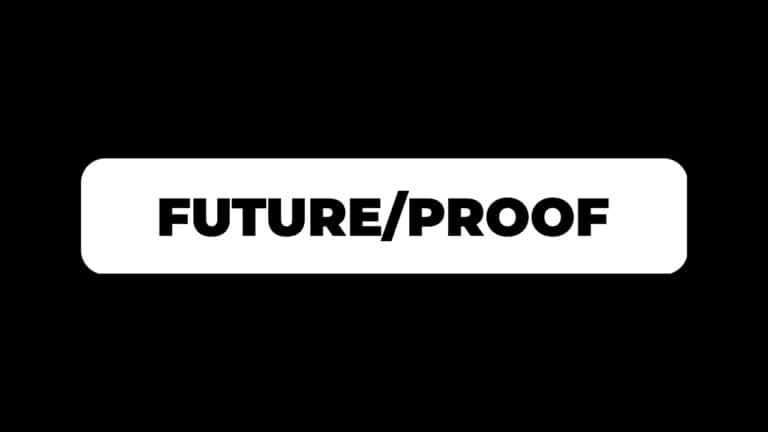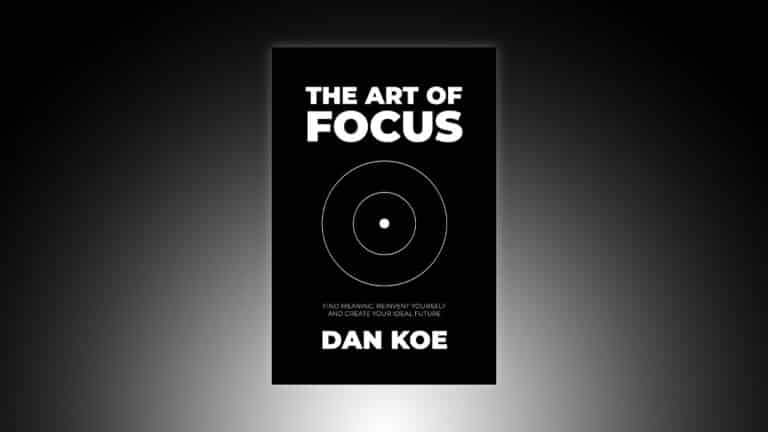The mark of a free individual is that they get what they want in life.
This requires them to learn how to learn, how to earn, and how to think.
The last one – how to think – is the most important because your thoughts influence what you learn, how you act, and whether or not you can create a strategy that allows you to achieve the big goals that most people wouldn’t even think to achieve.
But here’s the thing: you don’t need to be smart to think like a genius.
In fact, you don’t want to be like most smart people. Smart people often aren’t that smart. They memorize facts to get a secure and high-paying job while overanalyzing the risk of doing what they want. Dumb people often run laps around smart people because they take the stupid risks that shift the trajectory of their lives.
Genius-level thinking isn’t about book smarts.
It’s about clarity.
That’s why most people end up in a life they hate and aren’t able to think of a way out. Their mind can’t sift through the overwhelm, anxiety, and stress so it continues to beat them down until they give up completely.
The good news is, thinking is a skill, and skills can be practiced.
I’ve always admired the articulation of Jordan Peterson, the magic behind Alan Watts, and the clarity of Daniel Schmachtenberger. I want to share with you one of the most powerful models that has yet to be conceived. It’s a synthesis of all of the world’s great philosophies, scientific discoveries, and psychological patterns that, if you spend enough time with it, will radically transform your life.
It doesn’t matter if you’re trying to figure out what you want to do with your life, become a spiritually enlightened monk, or build a billion-dollar company, this model will drastically shorten how quickly you can achieve those things.
This Map Of All Knowledge Is Mind-Blowing
“I don’t have to agree with everything you say, but I should attempt at least to understand it, for the opposite of mutual understanding is, quite simply, war.”
– Ken Wilber
This may sound obvious, but you have to think to solve a problem or achieve a goal.
You need to identify a problem.
You need to understand it deeply.
You need to hypothesize a reasonable goal.
You need to create and execute a strategy to achieve the goal.
Sounds simple, but it’s incredibly complex. Most businesses fail because they don’t build a product that actually solves a problem. Most relationships fail because problems are never identified. Most people fail in general because they simply can’t see a way out of their situation.
So, if you can improve your thinking, you can solve those problems or achieve those goals faster. When you map that out over a 10-year timeline, it’s not difficult to see that you can achieve 10x more than most people do in their entire lifetime.
Let me introduce you to the AQAL model from Ken Wilber, an American Philosopher who made it his life’s work to synthesize all knowledge and experience into one comprehensive theory of everything.

While Wilber has stated that his model is not the end-all be-all, I can confidently say that this model is one of those “hidden gems” that most people don’t care about for the simple reason that they can’t see beyond their own worldview.
AQAL stands for All Quadrants, All Levels.
Wilber found, through decades of study and 3 year sabbaticals, that all knowledge and experience mapped into four interconnected quadrants:
- Individual Interior (Upper Left): Your personal thoughts, emotions, beliefs, and consciousness
- Individual Exterior (Upper Right): Your behaviors, actions, and physical brain states
- Collective Interior (Lower Left): Shared culture, values, and group consciousness
- Collective Exterior (Lower Right): Systems, structures, and social institutions
For becoming a genius-level thinker, the utility of this model is that when you are facing any form of challenge, you can systematically examine it from all four quadrants or perspectives.
More importantly, most people only think from one quadrant and preach that as the “one true way.” Capitalists focus on the economic system, lower right. Scientific materialists focus on matter and behavior, upper right. Religions focus on shared faith, lower left. Stoics and Buddhists focus on the internal world, upper left.
The fact of the matter is that all of these perspectives are valid and overlapping. Locking yourself into one dogmatic worldview puts you in a box. Certain problems are best solved from certain perspectives, and if you can’t access the right one, you will experience unnecessary pain in life.
To make this clear, let’s run through a difficult example.
I think it’s safe to say that most people struggle to figure out what they want in life. That’s a hard problem that 90% of people get stuck on.
If you’ve heard of the Japanese concept of IKIGAI, think of the AQAL model like that, but on steroids, especially in this context.
Now, thinking is a conversation with yourself.
Idiotic thinking is a conversation that turns into an argument and ends fast because you latch onto one answer.
Genius thinking is a conversation that accurately covers multiple perspectives and synthesizes their best parts into a clear solution.
To begin figuring out what we want out of life, we ask a series of questions within each quadrant in the map of all knowledge and experience.
Here are some examples I came up with (Note that this takes time. True thinking is difficult).
It may be wise to pull out a pen and paper.
Individual Interior (Upper Left) – Your Inner World
- What are my core values and what truly matters to me?
- What activities make me feel most alive and energized?
- What fears or limiting beliefs are holding me back?
- What does my intuition tell me when I quiet the mental noise?
Individual Exterior (Upper Right) – Your Actions & Capabilities
- What are my natural talents and developed skills?
- What does my behavior reveal about my true preferences?
- What were some of my favorite things as a child?
- What concrete steps am I taking and what life is that leading to?
Collective Interior (Lower Left) – Cultural & Social Context
- What do my parents or religious leaders expect of me in terms of their idea of success?
- How do my friends influence my career aspirations and life path?
- How does the language I speak and digital culture I am exposed to influence my opportunities?
- What shared values am I drawn to? What do I find meaningful?
Collective Exterior (Lower Right) – Systems & Structures
- What are the current opportunities for jobs, careers, or entrepreneurship in today’s world?
- How does the education system or internet shape my path?
- What technological or social trends are creating new opportunities?
- What systemic barriers or advantages do I face?
By using this model, you turn the question of “what do I do with my life?” into a comprehensive map that reveals how your authentic self, actual capabilities, personal calling, economic realities, and cultural contexts all interplay.
Rather than ending up with the answer of “I don’t know” or “I’m not interested in anything,” you may end up with a few realizations.
You might discover you value creativity over financial security.
You might discover that the fear of disappointing your parents is hindering your authentic desires.
You might notice that you procrastinate on certain tasks (to remove from your life or delegate) while you can’t stop talking about other interesting tasks.
You might realize that technology allows you to learn more, do more, and create a career path that wasn’t available in the recent past.
Those are deep, life-changing realizations that you may not have come to on your own.
And while that’s powerful, that’s only the first half of this model.
Why Smart People Are Incredibly Dumb
You could say that what humans selected for are genetics selected for memetics—our genetics selected for radical neuroplasticity and the capacity to have much more significant software upgrades that could change our capacity without needing hardware upgrades.
– Daniel Schmachtenberger
When I first came across this, I was blown away.
It made so much sense that it felt like my mind had expanded into a new dimension of thinking.
We covered the “All Quadrants” portion of AQAL, but not the “All Levels” portion.
All Levels refer to the developmental stages of consciousness that individuals and collectives can evolve through.
When it comes to thinking like a genius, this is crucial because most life conflicts or “impossible” problems exist because people are operating from different levels.
We’ve discussed this in depth before when discussing Spiral Dynamics and the 9 Stages of Ego development, so I want to focus on the 4 key levels that will change how you think about the world.

These levels of development illustrate the dominant value systems of a person or culture. In other words, these levels show what people, cultures, or systems hold as central and important, which influence the decisions that are made and how problems are perceived and solved. Most people reside in the first three, while very few – let’s call them geniuses for the sake of this letter – fall into the fourth.
1) Premodern
These individuals, cultures, or systems follow established authority and traditions. Their thinking is black and white. There is only “one right way,” and that usually involves obeying a God or conforming to what is right and true.
2) Modern
They value science, individual achievement, and competition. You can best identify this level in universities, corporate structures, and self-help teachings. People with a modern worldview are dogmatic about the fact that success should be based on merit and results.
3) Postmodern
Postmodernists value relativistic thinking. Everyone’s truth is valid. Include everyone and ensure they are equal.
With each of these stages, there are good and bad parts, and in today’s world, postmodern thinking has gone pathological, resulting in things like DEI, gender politics, and attempting to dismantle all hierarchies, which is stupid and impossible.
The critical piece of these first 3 stages is that they cannot hold multiple perspectives. They are right and you are wrong. This makes it difficult for them to think outside of their stage, and even more difficult to solve personal and systemic problems that lead to beneficial progress for humanity.
This is why smart people are incredibly dumb.

4) Second-Tier
With enough effort and development, you can reach the stage of second-tier thinking.
At this stage, you are able to look backward and pull truths from all prior perspectives, opening up a world of complexity, systems thinking, and awareness.
It’s less about a black and white “I’m right and you’re wrong” and more about a nuanced “the best solution comes from a synthesis of all.” Authority is important, merit is important, equality is important, but many people can hold those contradictions in their minds long enough for them to be reconciled.
Genius thinkers understand that these are stages, not static identities you have for the rest of your life. They often act as “translators” between different stages.
If the problem is business related, they can put on the cap of a CEO and resolve it faster than someone who permanently wears the cap of a bible-thumper for clear reasons.
If the problem is in a personal relationship, mansplaining about female psychology may help, but it isn’t the best substitute for empathy, depending on the context.
If the problem is writing on social media to attract and help an audience of self-helpers, you must understand their psychology and the best way to navigate their mind to reach the next level of development.
When it comes to figuring out what you want in life, accepting that you are in a modern stage of development can allow you to zoom out a layer, notice your shortcomings, and account for them when acting toward a better life.
This is a dense topic.
We could continue talking about it for hours upon hours.
My challenge to you is to pursue this knowledge in your own time, by your own curiosity, because it will only enhance your ability to take control of your life.
Thank you for reading.
– Dan
- Related Reading on the 9 Stages of Ego Development: How to become more intelligent than 99% of people
- Turn your interests into a modern business by unlocking the paid substack articles: The One-Person Business Launchpad



